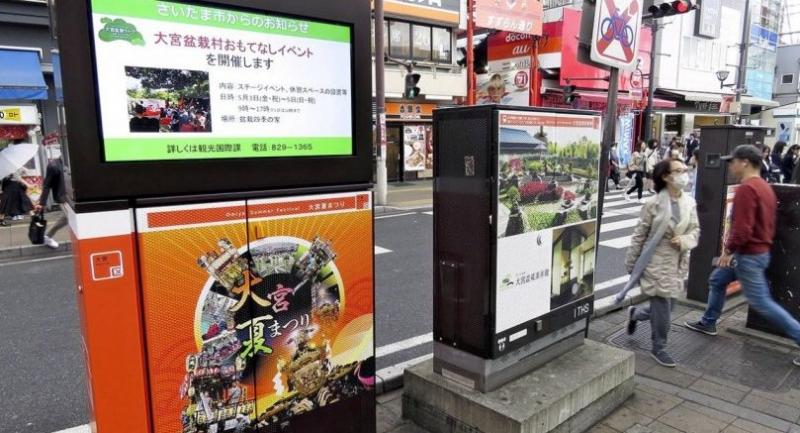Market for digital signage promising ahead of Games in Japan

TOKYO - The market for digital signage is rapidly expanding. With the spread of high-speed internet and a reduction in installation costs, the electronic devices can be set up at various places consumers can easily spot.
The market for digital signage is rapidly expanding. With the spread of high-speed internet and a reduction in installation costs, the electronic devices can be set up at various places consumers can easily spot.
Digital signage is also expected to provide information on tourism and disaster prevention.
In March, Panasonic Corp. and affiliated firms of Tokyo Electric Power Company Holdings, Inc. set up 49-inch digital signage screens above electricity transformer boxes on the streets near JR Omiya Station in Saitama. The devices run video clips about local tourism spots and emergency evacuation places. The companies are conducting a test together with the Land, Infrastructure, Transport and Tourism Ministry and the Saitama municipal government, using cameras installed on the devices to find out how passersby respond to different types of information.
As more utility poles are removed to install electric wires underground, electricity transformers are often set up on sidewalks. Currently, it is prohibited to place advertisements on transformers, but the ministry will look into whether the regulation should be relaxed nationwide based on the findings of the test.
Digital signage has long been used for large screens in baseball stadiums and billboards on buildings. In recent years, it has come to be used in a wider variety of places, such as trains, shops and taxis. Behind the expansion lies the availability of thin high-resolution screens, falling prices of related equipment and technical improvements including spread of high-speed internet. Allowing such devices on transformers would further increase places to install them.
Digital signage is increasingly used for providing information on tourism and disaster prevention, because it can handle a large amount of data. The Tokyo metropolitan government, for example, plans to install about 150 digital signage devices to provide such information in fiscal 2019, in the run-up to next year’s Tokyo Olympics and Paralympics.
Capitalizing on this demand, NEC Corp. developed an advanced streetlight in 2018. In addition to illumination, the device can also provide disaster information in English and Chinese such as evacuation guidance based on the amount of traffic at that time. The company aims to install the product around competition venues.
Although initial investment is costly, digital signage enables instant information updates, expected to reduce labor and other costs in the long run. Major home appliance retailer Biccamera Inc. introduced digital price tags on the shelves for all products at its outlet opened in Machida, Tokyo, in February. Price tags can be changed all at once, which “helps reduce working hours” of the outlet’s workers, according to a Biccamera public relations officer.
According to estimates by Fuji Chimera Research Institute Inc., the digital signage market is expected to expand to ¥318.6 billion in 2025, more than double the ¥143.7 billion seen in 2017. “Digital signage, which can run real-time information, will further evolve with the use of artificial intelligence, among other technologies,” said the company’s senior researcher Eigo Yamada.
